A book with handwritten notes, a gift inscription and an autograph by composer Pyotr Tchaikovsky
- Pickup from gallery : Set a route
- Courier delivery
- Delivery by a transport company in the shortest possible time
- VIP air delivery
- Delivery rates
Nothing was found for your request. Try to change the wording or go to the Catalog
Also you may call +7 (495) 927 60 67 and we will help you choose the best gift.
Catalog

















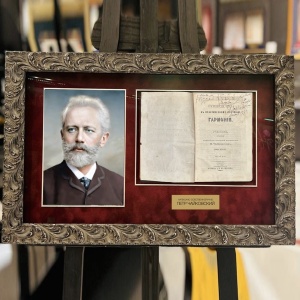
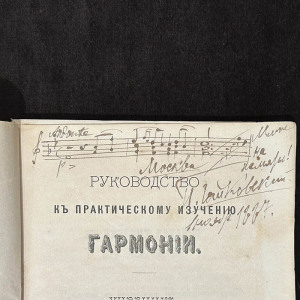
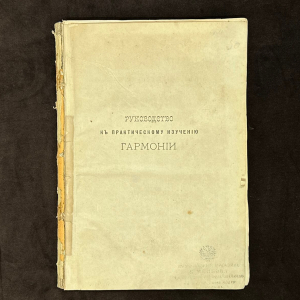
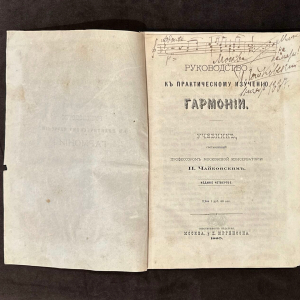
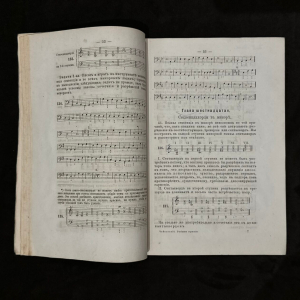
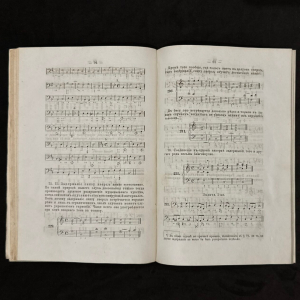
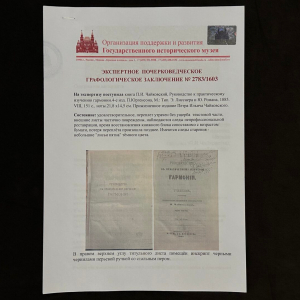


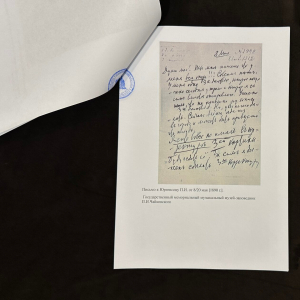
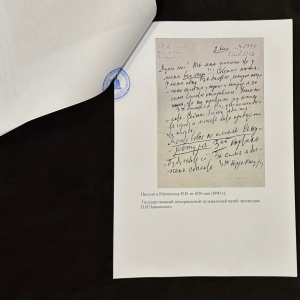
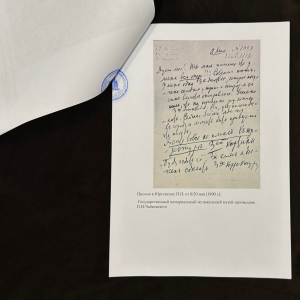
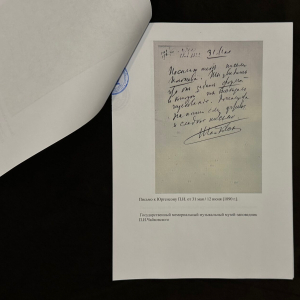
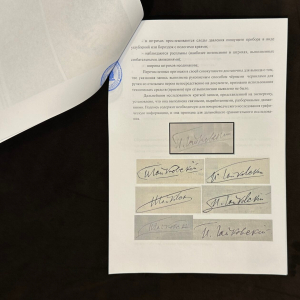
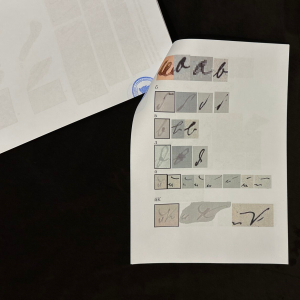
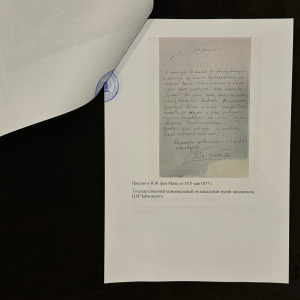
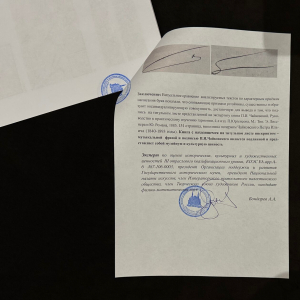
In the history of music, there are names that sound like the melody itself – majestic, eternal, timeless. Pyotr Ilyich Tchaikovsky is a composer who changed the sound of the world, created works that became the musical codes of entire generations. His brilliant scores, symphonies, operas and ballets penetrated into the hearts, causing delight, awe and silent admiration. To have a genuine artifact that imprinted his own hand is to hold in the palm of his hand a piece of eternity connecting the past and the present.
Here is a rare book, A Guide to the Practical Study of Harmony, published in Moscow in 1885 under the auspices of the outstanding music publisher Peter Yurgenson. This work is not just a textbook, but the result of Tchaikovsky's long–term reflections on the nature of music, its harmonic structure, and its deep laws. In it, he summarized his teaching experience at the Moscow Conservatory, laying the foundation for music education for decades to come.
But the true value of this relic is determined not only by its substantial significance, but also by the composer's personal touch. On the title page is his handwritten donation inscription: "To Mitya in memory of P. Tchaikovsky. November 1, 1887." These lines, written in an elegant but confident handwriting, carry the warmth and personal emotion that he put into this gesture. Next to it is a unique musical recording written by him – a few notes that have become a frozen melody on paper.
Pyotr Yurgenson, a publisher whose name is forever associated with Tchaikovsky's work, believed in his genius even when the public did not realize the scale of his talent. It was Jurgenson who first published his symphonies, ballets, and operas, even when it seemed commercially impractical. Their collaboration was more than a business partnership – it was a meeting between two people obsessed with music, striving to leave a legacy timeless to the world.
This artifact preserves the breath of that era, permeated with the aroma of ancient notes, first performances, and great achievements. The paper bears the stamp of time – its texture, muted shade, light traces of time – all this makes it not just a rarity, but a relic worthy of admiration. Framed in a luxurious frame, it turns into a treasure worthy of the best private collections.
The copy is accompanied by an expert examination of the State Historical Museum, but its true value goes beyond official documents. This is an object, the possession of which symbolizes power over time, a unique opportunity to join the legacy of the great composer. It is a sign of being chosen, of refined taste, of superiority over the ordinary. This is a thing that can become the central artifact of the collection, an object of admiration that even museums bow to.

A passport is attached to products that cost more than 10,000 ₽:
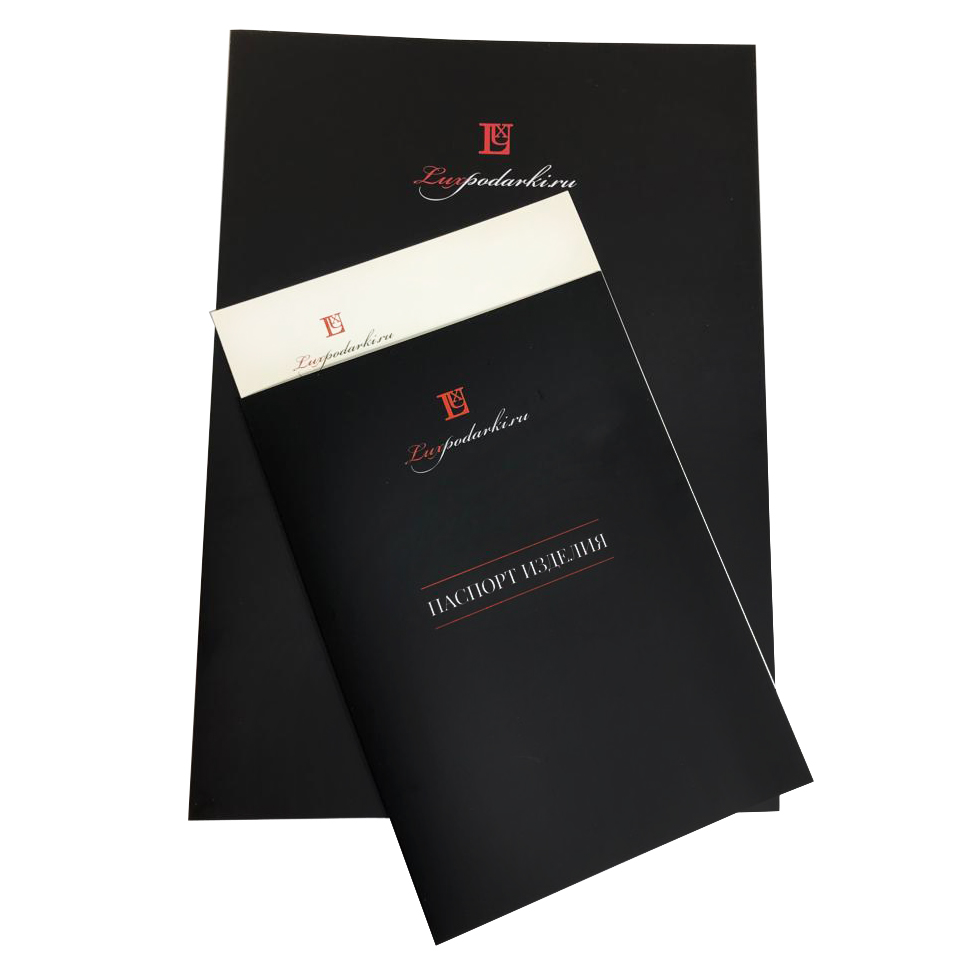
























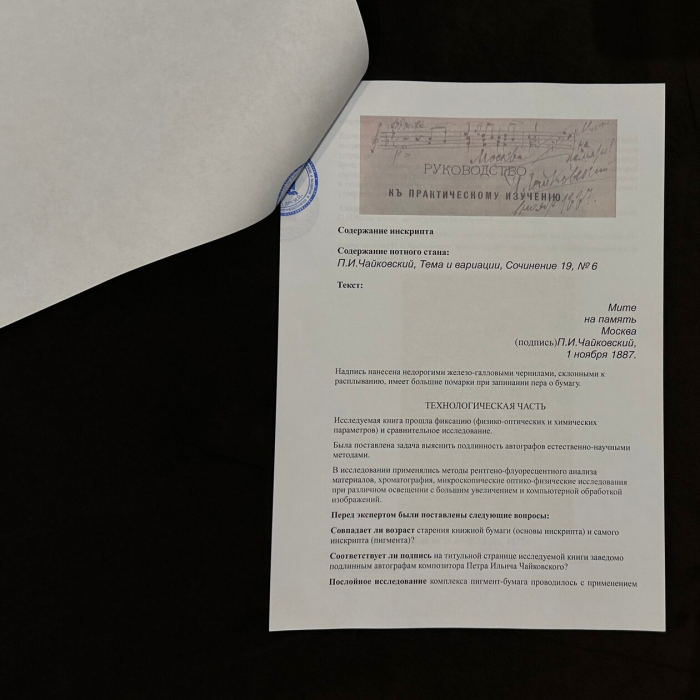
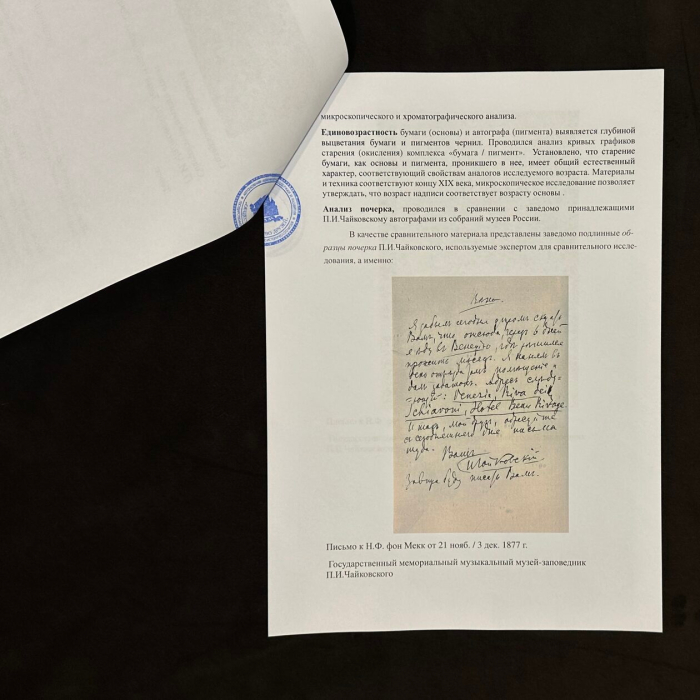








"We don't collect things, we collect stories"
Stargift is a union of two Moscow collectors who have turned their long—term hobby into a unique project, and the collection itself, consisting of more than 2,000 exhibits, into a brilliant collection of personal belongings and autographs of celebrities, rare books and objects of classical and modern art. Collectible exhibits are regularly exhibited in prestigious galleries and fashion exhibitions in Moscow and St. Petersburg.
Stargift actively cooperates with major companies, private banks, concierge services, and leading charitable foundations. Our clients are Forbes businessmen, politicians and show business stars.
The authenticity of all exhibits is confirmed by Stargift certificates of origin, as well as certificates from leading international certification agencies and expertise from museums and libraries at the national level.
| Pickup from the gallery | free |
| In the next day (18 September) | 300 ₽ |
| On the day of the order (17 September) | 400 ₽ |
| Within 2 hours (17 September) | Check with the manager |
| Evening delivery (17 September) | Check with the manager |
| up to 6 km from MKAD (17 September) | 600 ₽ |
| from 6 to 10 from MKAD (17 September) | 900 ₽ |
| Over 10 km from MKAD (17 September) | Check with the manager |
| VIP, by courier (today)(17 September, today) | from 3 000 ₽ (check with the manager) |
| The transport company | according to the tariff of the TC |
Courier delivery is carried out when ordering for a total amount of 5000 ₽


Войдите, чтобы оставить отзыв о товаре
The manager will contact you at to confirm the order within 15 minutes during business hours.
| Payment: | By card |
| The amount: | 0,00 |
| Shipping method: | VIP air delivery |
| Delivery address: | New Vasyuki, str. Chairs, 12 |
| Delivery date: | 24.12.2021 y. |
| Delivery Time: | from 17:00 to 21:00 |
| Recipient: | John |
| Telephone: | John |
| Mail: | John |
| Comment: | John |
Чтобы заказать изделие, заполните форму и отправьте нам. В течение 10 минут в рабочее время специалист свяжется с вами для подтверждения запроса!
| Изделие: | Статуэтка железнодорожнику «Стрелочник» |
| Количество: | От 1шт. |
| Упаковка: | Стандартная (бесплатно) |
| Услуги: | 2 |
Чтобы узнать стоимость изделия, заполните форму и отправьте нам. В течение 10 минут в рабочее время специалист скажет стоимость.
| Выбранное изделие: | Артикул: XXX-XX |

You can always contact us
+7 (495) 927 60 67How is it more convenient for you to contact us?
